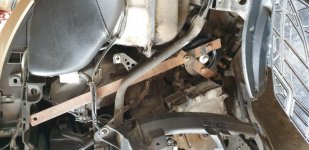I'm with PMK on this. There is many front sprocket failures, the dealers know about the issue and BRP also knows about the issue. Here in the UK BRP does not challenge a claim for a replacement sprocket the issue is so prevalent. However, your 2019 will be fitted with a modified sprocket and it should also be tightened to the revised higher torque. With a bit of luck you will be OK. But, it's no use just looking to see whether it's OK occasionally because if it fails, by the time you find the red dust the damage is done and you'll need a new sprocket, plus when the sprocket fails it also frets the end of the splined drive shaft and the replacement sprocket will never seat quite as well as it originally did. If you can do the work yourself it's a straightforward task, doesn't take long and will give you peace of mind for the future.
PMK has his favourite Moly grease but you can buy constant velocity joint grease in your local auto store. It's high spec moly grease and will be very satisfactory.
For info, the splines should not be carrying the driving force on the sprocket, they are locators for the sprocket and a failsafe should an issue develop. The driving force is transmitted via the frictional grip of the driving shaft end and the sprocket end drive face. The tightening torque of the bolt applies pressure to the sprocket to generate this friction. The latest sprockets have an increased area drive face and the tightening torque of the bolt is also increased to provide more friction than the previous Spyders had. We are recommending the moly grease as a saviour should there be any movement of the sprocket on the splines.
It's your call as to whether you trust BRP to have got it right on your machine. If the dust does appear, I bet you'll regret not having prevented the issue.

